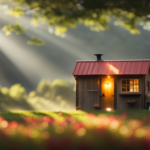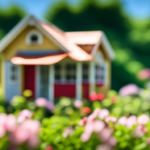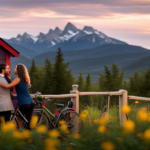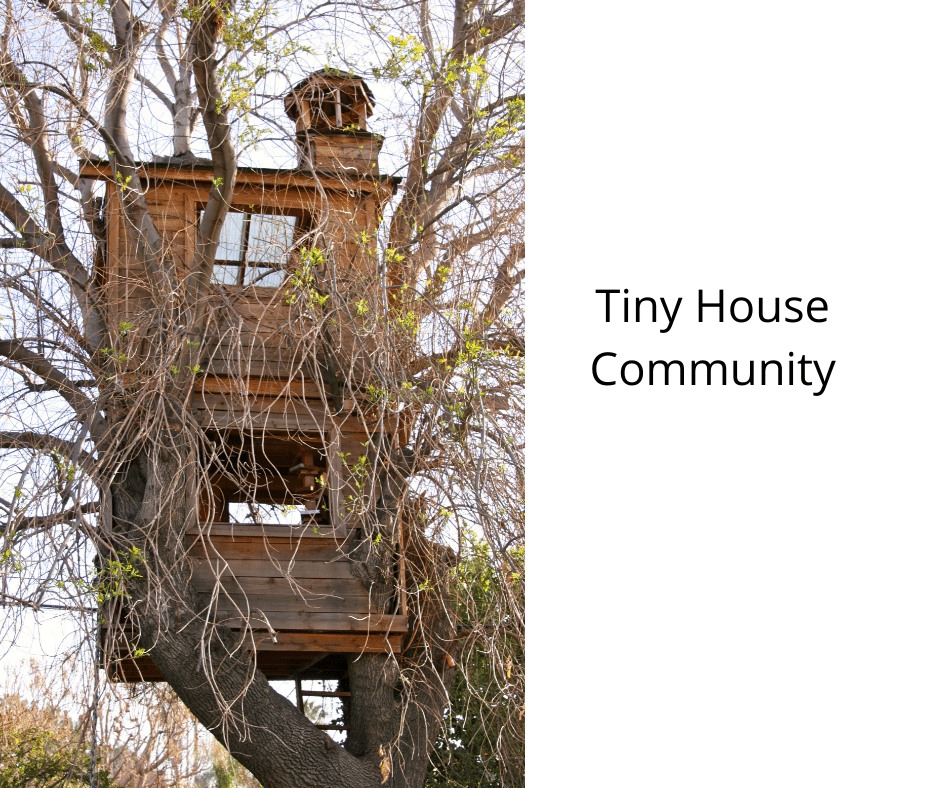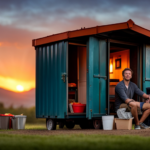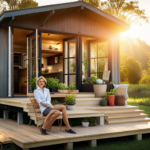Beginners Guides
Couple Who Built Tiny House Now Has To Live In It
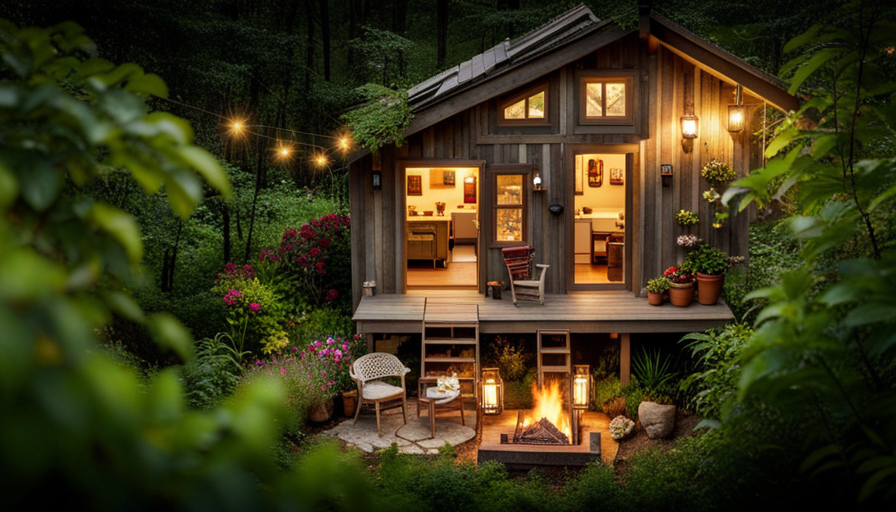
Well, well, well. It’s quite surprising that my partner and I have found ourselves residing in a tiny house. This was definitely unexpected for both of us.
Yet here we are, nestled snugly in our cozy little abode, surrounded by the fruits of our labor.
It all started with a crazy idea, a dream of simplifying our lives and embracing a minimalist lifestyle. We took the plunge and decided to build a tiny house from scratch, little did we know the challenges that awaited us. But hey, life is all about taking risks, right?
Now, after overcoming unexpected obstacles and learning some valuable lessons along the way, we find ourselves adjusting to this new way of life. It may not be what we initially envisioned, but the benefits of living in a tiny house are undeniable.
So, join us on this incredible journey as we share our experiences and explore the world of tiny house living.
Key Takeaways
- Transitioning to tiny house living requires adjusting to a simpler lifestyle and letting go of excess belongings.
- Living in a tiny house brings significant cost savings and promotes environmental sustainability.
- Building a tiny house teaches valuable lessons in adaptability, problem-solving, and maximizing functionality in a compact living space.
- The journey of building and living in a tiny house also emphasizes the importance of gratitude and finding contentment in experiences rather than material possessions.
The Decision to Build a Tiny House
When I first laid eyes on the enchanting concept of a tiny house, I knew I had found my dream home. The decision-making process was not taken lightly. We considered the financial implications, weighing the cost of building and maintaining a tiny house against the benefits of downsizing and living a more minimalistic lifestyle. Ultimately, the prospect of financial freedom and the ability to live mortgage-free convinced us that building a tiny house was the right choice.
Little did we know, there would be challenges ahead. From finding the right location to navigating zoning regulations, the road to building our tiny house was not without its obstacles. However, we were determined to make our dream a reality.
Challenges of Building a Tiny House
Despite the challenges I faced, I must admit that constructing my tiny abode was an adventure filled with unexpected twists and turns.
One of the major challenges I encountered was cost considerations. Building a tiny house may seem like a more affordable option, but I quickly realized that expenses can add up quickly. From purchasing materials to hiring professionals for certain tasks, the costs can easily exceed expectations.
Additionally, space limitations were a constant hurdle. Every decision had to be carefully thought out to maximize the limited space available. It required creativity and ingenuity to find innovative storage solutions and make the most of every square inch.
However, despite these challenges, the satisfaction of completing the project made it all worthwhile. Transitioning to tiny house living was the next chapter in this unconventional journey.
Transitioning to Tiny House Living
Embrace the freedom and simplicity of downsizing to a tiny home, where every square inch becomes a reflection of your unique lifestyle. Transitioning to tiny house living requires embracing a minimalist approach and going through a downsizing process.
Here are two key aspects to consider:
-
Letting go of excess: Adopting a minimalist living mindset means letting go of unnecessary possessions and focusing on what truly matters. The downsizing process forces you to evaluate your belongings and prioritize what’s essential, leading to a more intentional and clutter-free living space.
-
Maximizing functionality: In a tiny home, every inch counts. To make the most of the limited space, it’s crucial to find creative ways to maximize functionality. This can involve utilizing multi-purpose furniture, implementing clever storage solutions, and optimizing the layout to ensure efficient use of space.
Transitioning to a simpler lifestyle in a tiny house allows for a deeper connection with the things that truly bring joy and purpose.
Adjusting to a Simpler Lifestyle
Imagine stepping into a world where your possessions are pared down to only the essentials, like a hiker’s backpack filled with only the most important gear, allowing you to navigate life with a newfound sense of lightness and freedom.
This is the essence of minimalist living, a lifestyle that my partner and I have embraced after transitioning to a tiny house. The downsizing process was both challenging and liberating. We had to let go of sentimental items and prioritize functionality over excess.
Our new home is a beautiful blend of simplicity and efficiency, with every inch maximized for practicality. Living in a tiny house has taught us the value of living with less and has allowed us to focus on experiences rather than material possessions. It has given us a sense of freedom and contentment that we never thought possible.
As we delve into the benefits of living in a tiny house, we realize that this minimalist lifestyle has truly transformed our lives.
Benefits of Living in a Tiny House
Step into a world where your lifestyle is simplified, your space is maximized, and your experiences take center stage in a tiny house. Living in a tiny house offers numerous benefits, including significant cost savings and environmental sustainability.
With a smaller space, utility bills are reduced, allowing for more money to be allocated towards experiences and savings. Additionally, the smaller footprint of a tiny house means less energy consumption and a smaller carbon footprint, making it a more sustainable choice for the environment.
The simplicity of living in a tiny house also encourages a minimalist lifestyle, as it forces you to prioritize what’s truly important and let go of unnecessary possessions. This newfound simplicity brings a sense of freedom and contentment.
Transitioning into the subsequent section about ‘overcoming unexpected obstacles,’ living in a tiny house also teaches valuable lessons in adaptability and problem-solving.
Overcoming Unexpected Obstacles
Navigating the twists and turns of life in a tiny house can be likened to a thrilling roller coaster ride, filled with unexpected obstacles that test your adaptability and problem-solving skills. Adapting to change is a constant companion in this compact living space.
From learning to maximize storage to finding innovative ways to entertain guests, every day presents a new challenge. But with creativity and determination, we’ve been able to find solutions that make our tiny house feel like home. We’ve repurposed furniture to serve multiple functions, utilized vertical space for storage, and embraced a minimalist lifestyle.
It hasn’t always been easy, but the rewards have been worth it. As we reflect on our journey, we’ve learned valuable lessons about resilience and resourcefulness. Transitioning into the next phase of our story, we can’t wait to share the wisdom gained from our tiny house adventure.
Lessons Learned from the Tiny House Journey
As we navigated the unexpected obstacles of building our tiny house, we learned valuable lessons that have forever changed our mindset.
-
Adaptability: We quickly realized that flexibility was key to overcoming any roadblocks that came our way. Whether it was a design flaw or a construction setback, we had to learn to adapt and find creative solutions.
-
Patience: Building a tiny house requires a great deal of patience. From the planning stage to the construction process, we had to learn to embrace the slow and steady progress that comes with such a project.
-
Simplification: Living in a tiny house forced us to simplify our lives and let go of unnecessary belongings. This shift in mindset allowed us to focus on what truly mattered and brought a sense of freedom and contentment.
-
Gratitude: The challenges we faced on our tiny house journey made us appreciate the small victories even more. We learned to be grateful for every step forward, no matter how small, and to find joy in the simple pleasures of life.
Frequently Asked Questions
How did the couple make the decision to build a tiny house?
I made the decision to build a tiny house after carefully considering my decision-making process and financial considerations.
I weighed the advantages of downsizing and living a simpler lifestyle against the costs and responsibilities of a larger home. By opting for a tiny house, I could significantly reduce my living expenses and minimize my carbon footprint.
It was a practical and sustainable choice that aligned with my values and goals.
What were the biggest challenges the couple faced during the construction of their tiny house?
The biggest challenges I faced during the construction of my tiny house were managing the limited space, navigating building codes and permits, and ensuring the structure was structurally sound.
With such a small footprint, every inch mattered and I had to carefully plan and utilize the space efficiently.
Additionally, dealing with the bureaucracy of building codes and permits was time-consuming and sometimes frustrating.
Lastly, I had to make sure the construction was done properly to ensure the safety and durability of the tiny house.
How did the couple transition from a traditional home to living in a tiny house?
Transitioning from a traditional home to living in a tiny house involves a deliberate and intentional process. Lifestyle adjustments are necessary to adapt to the limited space and minimalistic living.
The transition process requires downsizing possessions, reevaluating daily routines, and embracing a more simplified lifestyle. It involves learning to make the most of the available space, optimizing storage solutions, and prioritizing needs over wants.
Adapting to the tiny house lifestyle requires flexibility, creativity, and a willingness to embrace a new way of living.
What adjustments did the couple have to make in order to adapt to a simpler lifestyle in their tiny house?
Adjusting to a simpler lifestyle in a tiny house comes with its own set of challenges. From downsizing our belongings to learning to live with less space, it hasn’t been easy. But in the midst of these adjustments, we have found a sense of liberation and fulfillment.
Simplifying our lifestyle has allowed us to focus on what truly matters, fostering a deep sense of contentment. It’s been a journey of growth, resilience, and discovering the beauty in simplicity.
What are the benefits the couple experienced from living in a tiny house?
Living in a tiny house has numerous benefits. The advantages of downsizing include reduced expenses, both in terms of construction and ongoing maintenance. Additionally, living in a smaller space encourages a simpler lifestyle, leading to less clutter and a greater sense of freedom. With less space to clean and maintain, I’ve got more time for hobbies and activities that bring me joy.
Overall, the benefits of tiny house living are financial savings, simplicity, and increased leisure time.
Conclusion
In the end, our journey to build and live in a tiny house was like navigating a treacherous river. We faced challenges, overcame obstacles, and learned valuable lessons along the way.
But despite the hardships, we embraced the simplicity and freedom that comes with tiny house living. Like a sturdy boat, our tiny house provided shelter and stability in the midst of life’s storms.
We may have chosen a different path, but we have found contentment in our humble abode.
Hi, I’m Emma. I’m the Editor in Chief of Tiny House 43, a blog all about tiny houses. While tree houses are often associated with childhood, they can be the perfect adult retreat. They offer a cozy space to relax and unwind, surrounded by nature. And since they’re typically built on stilts or raised platforms, they offer stunning views that traditional homes simply can’t match. If you’re looking for a unique and romantic getaway, a tree house tiny house might just be the perfect option.
Beginners Guides
How Do I Get Rid of Tiny White Bugs on My House Plants

- Health risks associated with tiny white bugs on house plants.
- Effective methods to prevent infestations of tiny white bugs on house plants
I am facing a small white insect issue with my indoor plants, and it is really frustrating me! These annoying bugs seem to be multiplying quickly, causing damage to my precious plants.
But fear not, my fellow plant enthusiasts, for I’ve done my research and found some effective solutions to eliminate these unwelcome guests.
In this article, I’ll share with you the knowledge and remedies I’ve discovered, so you too can reclaim your bug-free, thriving indoor garden.
Key Takeaways
- Aphids, mealybugs, and whiteflies are common types of tiny white bugs found on house plants.
- Lack of proper plant care, overwatering, and bringing infested plants indoors can lead to bug infestations.
- Homemade insecticides using water and dish soap or neem oil can suffocate and disrupt the feeding patterns of pests.
- Regular cleaning and inspection routines help detect and address pest issues early on.
Identifying the Tiny White Bugs on Your House Plants
I can easily spot the tiny white bugs on my house plants by carefully examining the leaves and stems. The most common species of these pests found on house plants are aphids, mealybugs, and whiteflies.
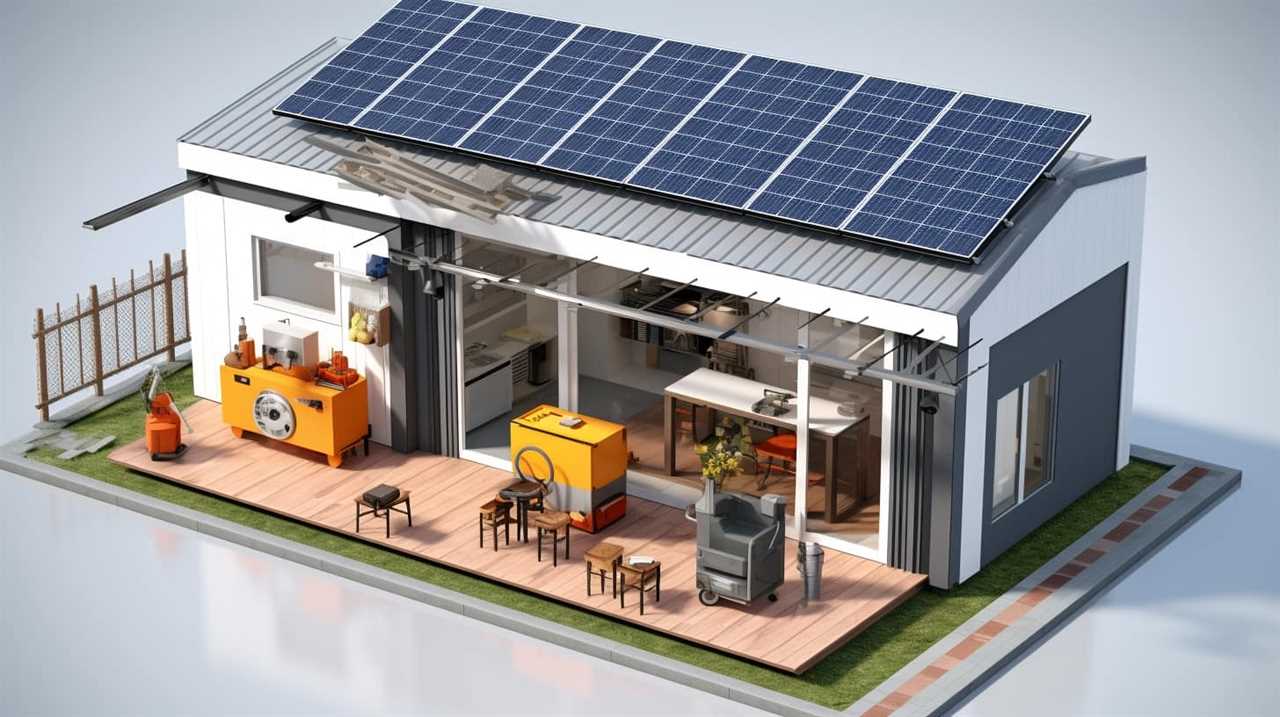
Aphids are small, pear-shaped insects that cluster on new leaves and buds.
Mealybugs are covered in a white, waxy substance and can be found on the undersides of leaves and in leaf axils.
Whiteflies, as the name suggests, are tiny white insects that fly around when disturbed.
An infestation of these tiny white bugs can cause significant damage to your house plants. Signs of infestation include yellowing leaves, stunted growth, distorted foliage, and a sticky residue called honeydew on the leaves. Furthermore, these pests can transmit plant diseases, weaken the plant’s immune system, and attract other pests.
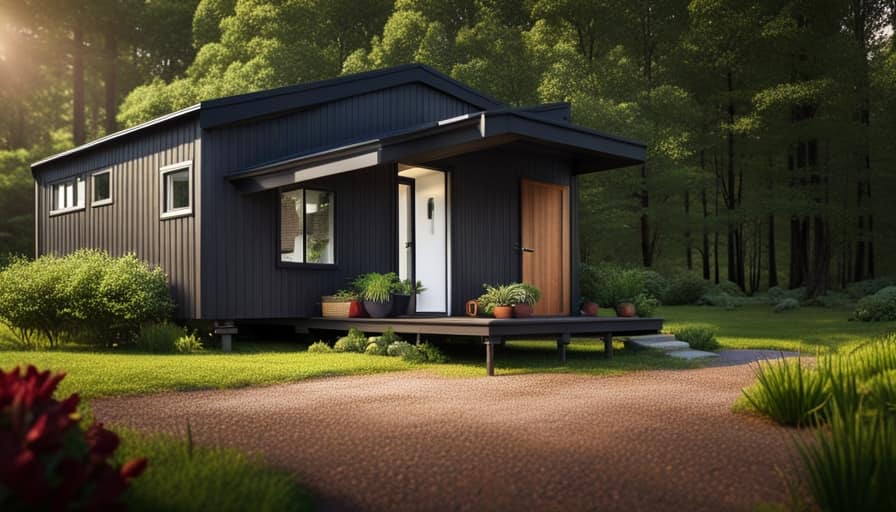
Understanding the causes of infestation is crucial in effectively getting rid of these tiny white bugs on your house plants.
Understanding the Causes of Infestation
Understanding the causes of infestation is essential in effectively eliminating these tiny white bugs on my house plants. Here are a few key factors to consider:
- Lack of proper plant care: Neglecting to provide adequate water, sunlight, and nutrients can weaken plants, making them more susceptible to bug infestations.
- Overwatering: Excessive moisture can create a favorable environment for pests like aphids and mealybugs.
- Bringing infested plants indoors: Introducing plants from outside without proper inspection can bring unwanted bugs into your home.
Recognizing the signs of bug damage is crucial for preventing infestation. Look out for yellowing, wilting leaves, sticky residue on leaves and stems, and tiny white bugs crawling on the plant’s surface.
Now that we understand the causes of infestation, let’s explore natural remedies to eliminate these pesky bugs.
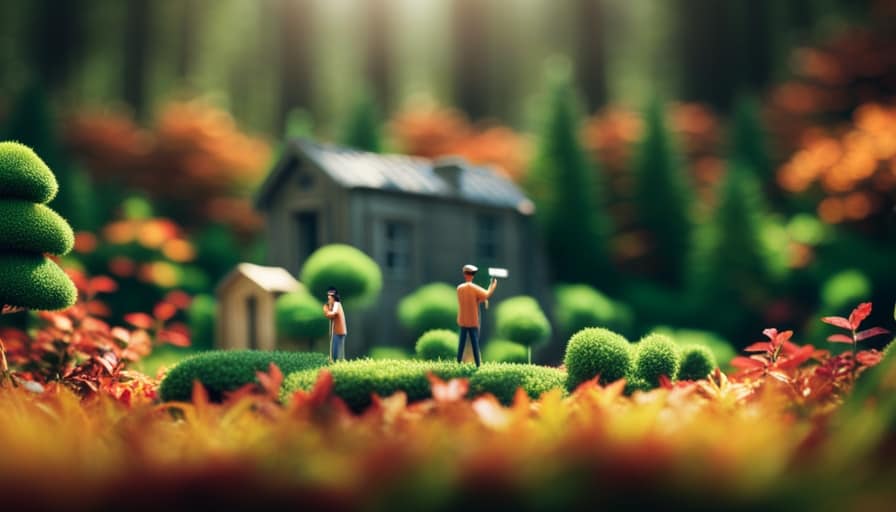
Natural Remedies to Eliminate the Bugs
To effectively get rid of these tiny white bugs on my house plants, I’ll need to rely on natural remedies that can eliminate them without harming the plants.
One effective option is to create homemade insecticides using ingredients readily available in your kitchen. You can mix a solution of water and dish soap, or water and neem oil, and spray it directly on the affected plants. These solutions work by suffocating the pests and disrupting their feeding patterns.
Another natural approach is to introduce insect-repelling plants into your garden. Plants like lavender, mint, and marigold emit fragrances that repel insects, keeping them away from your precious plants.
Chemical Solutions for a Lasting Bug-Free Environment
One effective chemical solution for achieving a bug-free environment is using a professional-grade insecticide spray. These sprays are specifically formulated to target and eliminate pests, including tiny white bugs on house plants. When using a professional-grade insecticide spray, it’s important to follow the instructions provided by the manufacturer to ensure safe and effective use.
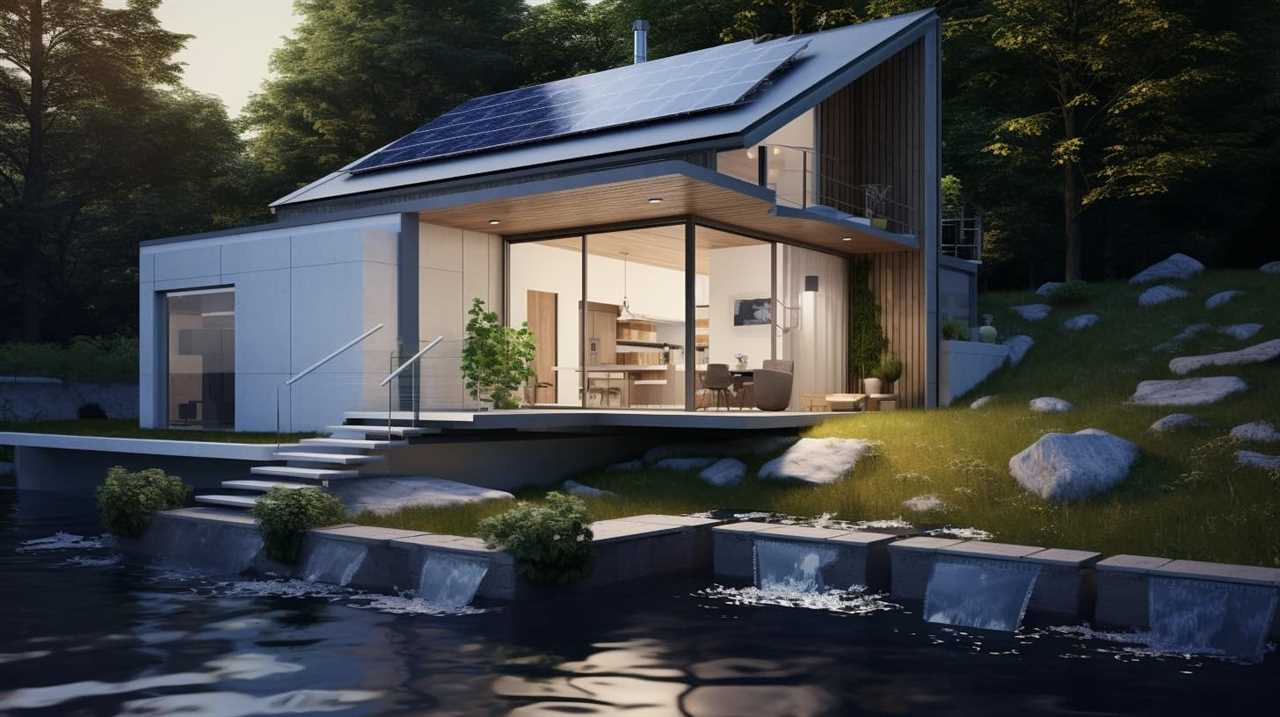
Additionally, consider these non-toxic alternatives to chemical solutions for pest control:
-
Neem oil: Derived from the neem tree, neem oil is a natural insecticide that can be effective against a wide range of pests. It works by disrupting the insect’s life cycle and repelling them from plants.
-
Insecticidal soap: Made from potassium salts of fatty acids, insecticidal soap works by suffocating pests on contact. It’s safe to use on most plants and can be an effective solution against white bugs.
-
Diatomaceous earth: This powdery substance is made from fossilized remains of diatoms and acts as a desiccant, drying out and killing insects.
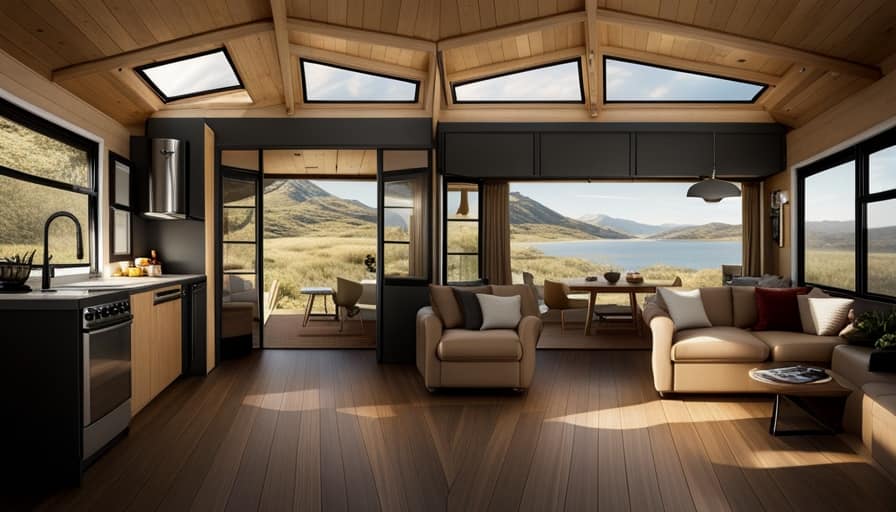
When using any chemical solution or non-toxic alternative, it’s essential to monitor the plants closely and repeat the treatment as necessary to maintain a bug-free environment. Professional pest control services can also provide expert guidance and assistance in achieving long-lasting results.
Preventing Future Infestations and Maintaining Healthy House Plants
To effectively prevent future infestations and maintain healthy house plants, I will implement a regular cleaning and inspection routine. This will help ensure that any signs of pests or diseases are detected early on and addressed promptly. Regularly cleaning the leaves and stems of my plants with a mild soap and water solution will help remove any dust or debris that can attract pests. Additionally, I will inspect the plants for any signs of infestation, such as white bugs or sticky residue on the leaves. To further enhance plant hygiene, I will also consider using beneficial insects, such as ladybugs or lacewings, which feed on common plant pests like aphids. By incorporating these practices into my routine, I can maintain healthy house plants and prevent future infestations.
| Regular Cleaning | Inspection Routine | Using Beneficial Insects |
| Remove dust and debris | Check for signs of infestation | Introduce ladybugs or lacewings to control pests |
| Promotes plant hygiene | Detect and address issues early | Natural pest control method |
| Prevents pest attraction | Maintain healthy house plants | Encourages ecosystem balance |
Frequently Asked Questions
Can These Tiny White Bugs Harm Humans?
Yes, tiny white bugs on house plants can harm humans. They can cause skin irritations and allergic reactions. It’s important to take steps to prevent infestations, such as regularly inspecting and cleaning your plants.
How Long Does It Take for Natural Remedies to Eliminate the Bugs Completely?
To completely eliminate the tiny white bugs using natural remedies, it typically takes a few weeks of consistent application. However, the effectiveness of these remedies can vary. It’s important to avoid common mistakes like under-applying or using incorrect remedies.
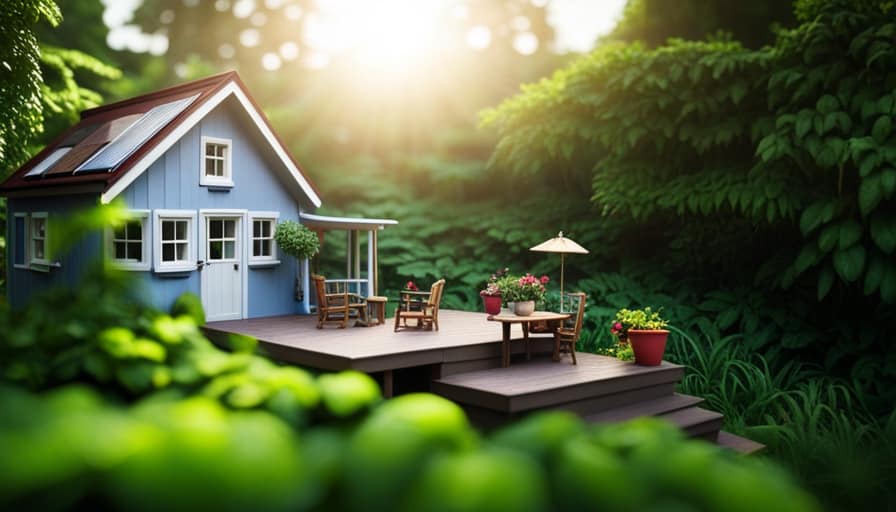
Are There Any Specific Types of House Plants That Are More Prone to Infestations?
Certain house plants, like lavender and marigolds, have natural repellent properties that can help prevent infestations. It’s important to choose plants that are known to repel bugs and to regularly inspect and clean your plants to avoid any potential infestations.
Can These Bugs Spread From One House Plant to Another?
Oh, the joy of tiny white bugs on house plants! Yes, these pests can spread from one plant to another. To control them, use insecticides and watch out for signs of infestation like sticky residue or wilting leaves.
How Often Should I Check My House Plants for Signs of Infestation?
I check my house plants for signs of infestation regularly to ensure their health. Common signs include tiny white bugs and yellowing leaves. Preventative measures like proper watering and cleaning can help keep plants bug-free.
Conclusion
In conclusion, taking care of our house plants goes beyond watering and sunlight. Identifying and eliminating tiny white bugs is a crucial part of maintaining a healthy environment for our plants.
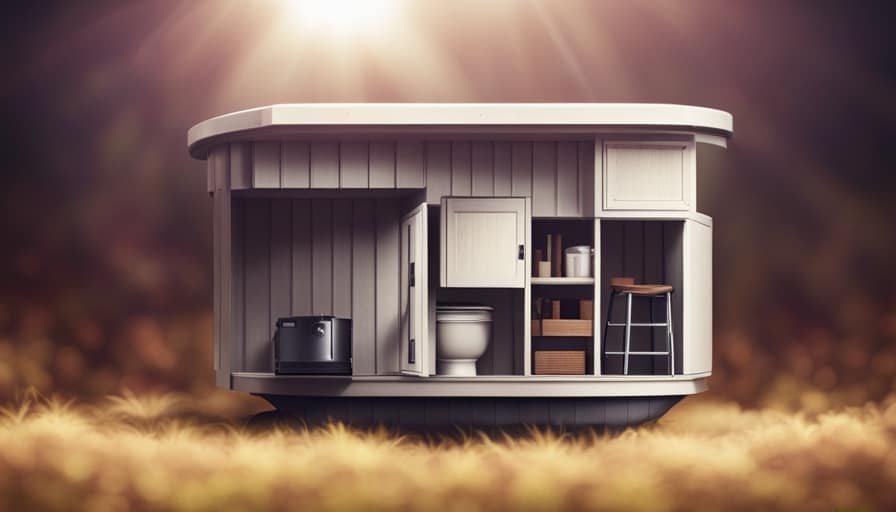
By understanding the causes of infestation and using natural or chemical remedies, we can ensure a bug-free environment. Remember, prevention is key, so regularly inspect your plants and take necessary measures to keep them thriving.
Happy gardening!
I’m Theodore, and I love tiny houses. In fact, I’m the author of Tiny House 43, a book about tiny houses that are also tree houses. I think they’re magical places where imaginations can run wild and adventures are just waiting to happen.
While tree houses are often associated with childhood, they can be the perfect adult retreat. They offer a cozy space to relax and unwind, surrounded by nature. And since they’re typically built on stilts or raised platforms, they offer stunning views that traditional homes simply can’t match.
If you’re looking for a unique and romantic getaway, a tree house tiny house might just be the perfect option.
Beginners Guides
How Do I Get Rid of Tiny Moths in My House

I have experienced the frustration of dealing with tiny moths flying around my food in the kitchen. But do not worry, I have a solution for you.
In this article, I’ll show you how to banish those pesky moths from your house for good. We’ll dive into identifying different moth species, understanding what attracts them, and simple prevention techniques you can implement.
Plus, I’ll share some natural remedies and professional options as a last resort. Say goodbye to those unwanted guests!
Key Takeaways
- Identifying the specific moth species is crucial for implementing targeted control measures.
- Moths are attracted to food sources, fabrics, and organic materials, so it’s important to store food in airtight containers and keep the house clean.
- Moths prefer dark, undisturbed areas to lay their eggs, so sealing cracks and openings in walls, windows, and doors can help prevent infestation.
- If natural remedies and DIY methods fail, it is advisable to seek professional pest control services for thorough inspection and tailored treatment plans.
Identifying the Culprits: What Type of Moth Is Invading Your Home
I can’t figure out what kind of moth is infesting my home. It’s frustrating not knowing the exact species, as different moths have different behaviors and habits. Identifying the culprits is crucial in order to effectively address the problem.
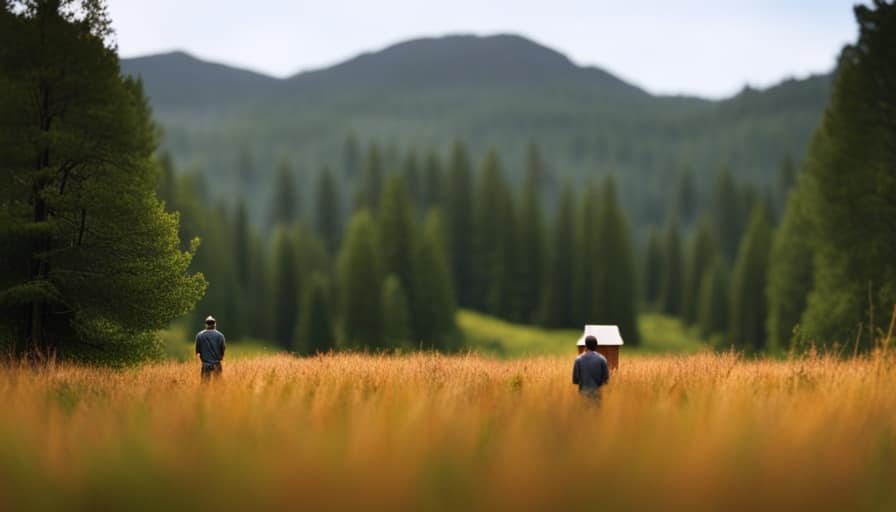
There are several common moth species that are known to invade homes, such as the Indian mealmoth, clothes moth, and pantry moth. Each species has distinct characteristics that can help with identification. Understanding their behavior is also important as it can give insights into their lifecycle and potential sources of infestation.
Moths are attracted to food sources, fabrics, and other organic materials. They can lay eggs in stored grains, textiles, or even pet food. By understanding the specific species and their behavior, it becomes easier to implement targeted control measures and prevent further infestations.
Understanding the Infestation: Why Are Moths Attracted to Your House
To effectively address the infestation, it’s essential to understand why moths are attracted to your house. Here are four reasons why moths may be flocking to your home:
-
Food sources: Moths are attracted to food, especially grains, cereals, and dried fruits. They can easily find their way into your pantry and feast on these items.
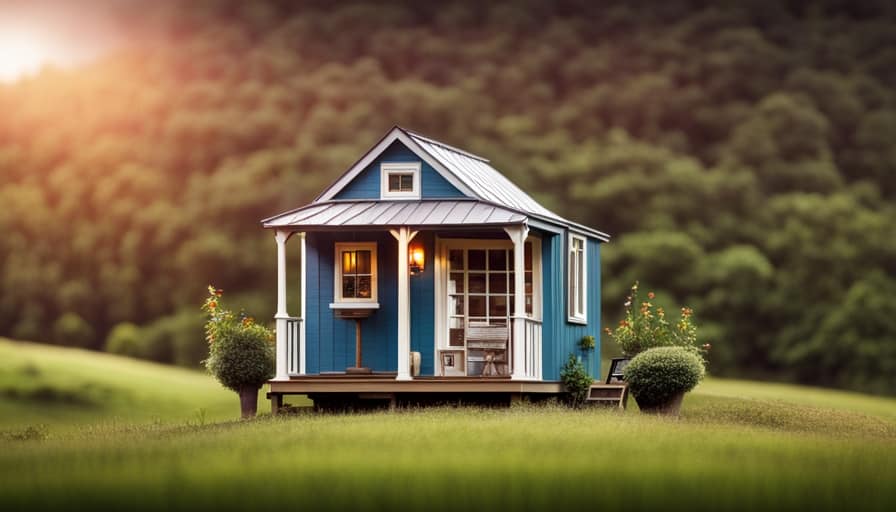
-
Moisture and humidity: Moths thrive in damp environments, making your house an ideal breeding ground if there are areas with high humidity or water leaks.
-
Suitable habitat: Moths are drawn to dark, undisturbed areas where they can lay their eggs undisturbed. This includes closets, attics, and basements.
-
Outdoor attraction: Moths can be attracted to your house from the outside, especially if you have outdoor lights that are left on at night.
Understanding moth behavior and their attraction to your house is crucial in preventing further infestation. By addressing these factors, you can take steps to keep moths at bay and protect your home.

Here are some moth prevention tips:
- Store food in airtight containers.
- Keep your house clean and free of crumbs or spills.
- Fix any leaks or moisture issues promptly.
- Use moth repellents or traps in vulnerable areas.
Prevention Is Key: Simple Steps to Keep Moths From Entering Your Home
Prevention is essential, so I’ll share some simple steps to keep moths from entering your home. By taking a proactive approach, you can create an inhospitable environment for moths and minimize the risk of infestations. One effective method is to use moth repellent products, such as sachets or sprays, in areas where moths are commonly found. These repellents contain chemicals that deter moths from entering your home. Additionally, it is crucial to seal any cracks or openings in your walls, windows, and doors. Moths can easily slip through these tiny gaps, so using caulk or weatherstripping can help keep them out. Regularly vacuuming and cleaning your home can also eliminate moth eggs or larvae that may be hiding in carpets or corners. By implementing these preventive measures, you can ensure a moth-free home environment.
| Steps to Keep Moths Away | |
|---|---|
| Use moth repellent products | Seal cracks and openings |
| Regularly vacuum and clean |
Natural Remedies: Non-Toxic Solutions to Get Rid of Moths
One effective way to get rid of moths naturally is by using a combination of vinegar and water to create a non-toxic moth spray. Here are some natural remedies you can try:
-
Vinegar and water spray: Mix equal parts vinegar and water in a spray bottle. Spray this solution on areas where moths are present, such as closets, drawers, and pantry shelves. The strong odor of vinegar repels moths and prevents them from laying eggs.
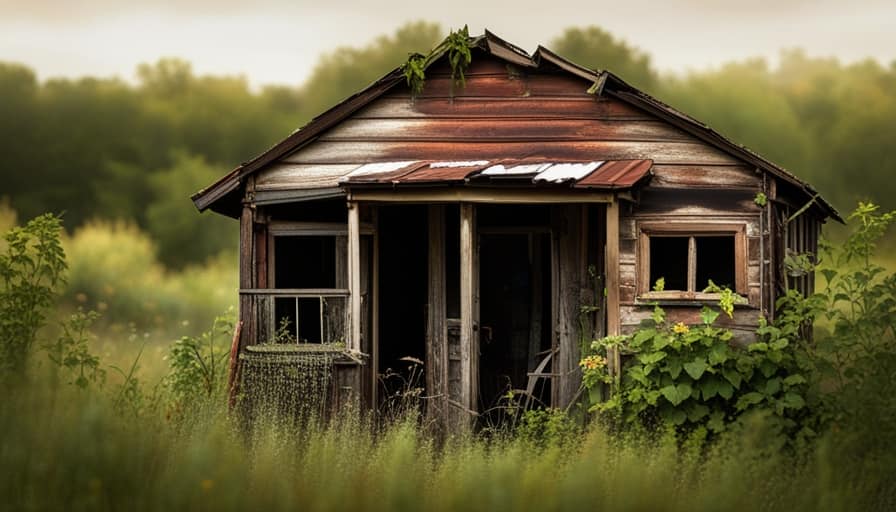
-
Cedar chips: Moths dislike the smell of cedar, so placing cedar chips in your closets and drawers can help deter them. You can also use cedar oil or cedar sachets for the same effect.
-
Homemade traps: Create simple moth traps by placing a mixture of vinegar, sugar, and dish soap in a bowl. The sweet scent attracts moths, and the dish soap traps them when they try to land on the mixture.
-
Lavender sachets: Moths are repelled by the fragrance of lavender. Place dried lavender in small sachets and tuck them in your clothing drawers or hang them in your closets.
These natural repellents and homemade traps can help you get rid of moths without using toxic chemicals. However, if these methods fail to eliminate the infestation, it may be time to consider professional pest control options.
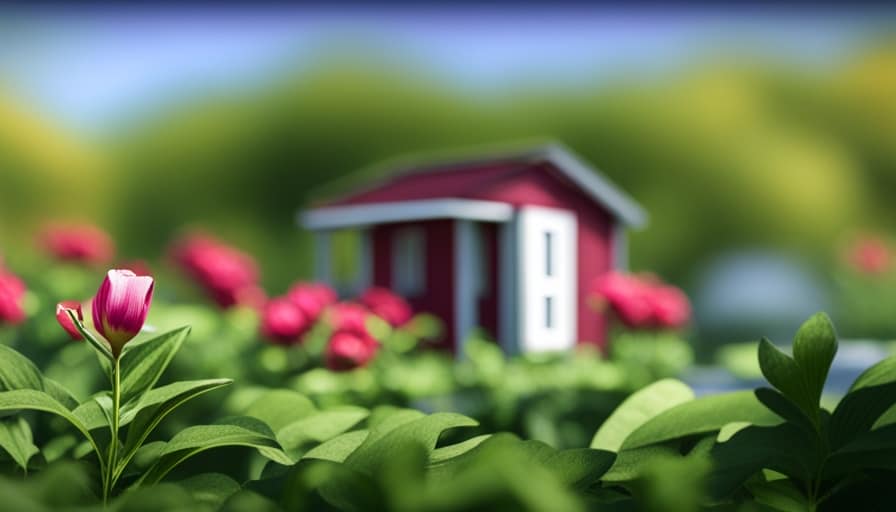
Last Resort: When All Else Fails, Professional Pest Control Options
If I’ve exhausted all other options, I’ll contact a professional pest control service to eliminate the moth infestation in my house. While natural remedies and DIY methods can be effective for small infestations, sometimes the problem persists or worsens despite our best efforts.
This is when it’s crucial to call in the experts. Professional pest control services have the knowledge, experience, and resources to effectively eradicate moth infestations. They’ll conduct a thorough inspection of your home to identify the source of the infestation and develop a tailored treatment plan.
The benefits of hiring professionals include their expertise in identifying different moth species, their access to specialized equipment and pesticides, and their ability to ensure the complete eradication of the infestation.
When all else fails, it’s best to rely on the expertise of professional pest control services to rid your home of those persistent moths.

Frequently Asked Questions
Can Moths Cause Any Damage to My House or Belongings?
Moths can cause damage to fabrics, carpets, and stored food. It’s important to address a moth infestation promptly. Using natural moth repellents, like lavender or cedar, can help deter them from your house and protect your belongings.
Are All Types of Moths Attracted to Homes, or Are There Specific Species That Are More Common?
In the world of moths, certain species have a penchant for our cozy homes. Understanding the types commonly found indoors can help us prevent the dreaded infestations from taking hold in the first place.
How Long Does It Usually Take to Get Rid of a Moth Infestation Using Natural Remedies?
Using natural remedies to get rid of a moth infestation can be effective, but the time it takes varies depending on the severity. Common signs of an infestation include sightings of adult moths and larvae, as well as damaged fabrics or food products.
Can Moths Carry Diseases or Pose a Health Risk to Humans?
Moths can transmit diseases to humans, so it’s important to take precautions. Individuals with allergies or asthma may experience respiratory issues due to moth infestations in homes.

Are There Any Specific Plants or Herbs That Repel Moths and Can Be Used as Natural Remedies?
Using natural moth repellents, such as specific plants and herbs, offers several benefits over chemical alternatives. Creating a moth repelling garden with lavender, rosemary, and mint can effectively deter moths from your house.
Conclusion
In conclusion, it’s essential to address the presence of these minuscule pests in your home promptly. By identifying the specific type of moth invading your space and understanding their attraction, you can take preventive measures to keep them at bay.
Utilizing natural remedies and seeking professional pest control services as a last resort will ensure a moth-free environment without compromising your household’s well-being.
Stay vigilant and employ these effective methods to bid farewell to these unwelcome visitors.
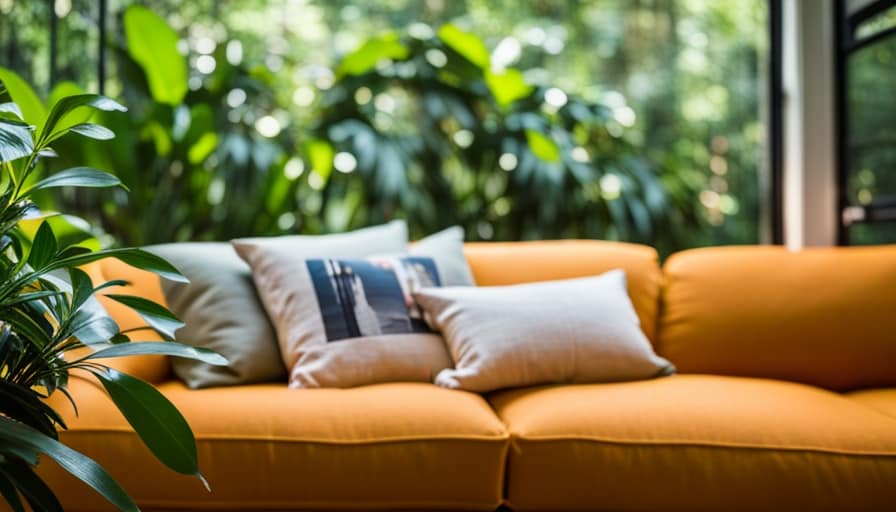
I’m Theodore, and I love tiny houses. In fact, I’m the author of Tiny House 43, a book about tiny houses that are also tree houses. I think they’re magical places where imaginations can run wild and adventures are just waiting to happen.
While tree houses are often associated with childhood, they can be the perfect adult retreat. They offer a cozy space to relax and unwind, surrounded by nature. And since they’re typically built on stilts or raised platforms, they offer stunning views that traditional homes simply can’t match.
If you’re looking for a unique and romantic getaway, a tree house tiny house might just be the perfect option.
Beginners Guides
How Difficult Is It to Build a Tiny House in Colorado Springs

I understand your concerns about building a tiny house in Colorado Springs. However, I can assure you that with the proper knowledge and guidance, it is completely achievable.
In this article, I’ll walk you through the zoning regulations, permitting process, finding suitable land, and navigating building codes. We’ll also discuss securing financing, budgeting, and dealing with utilities.
So, if you’re ready to embark on this rewarding journey, let’s dive in and make your tiny house dreams a reality.
Key Takeaways
- Zoning regulations and building permits are required for constructing a tiny house in Colorado Springs.
- Finding suitable land that complies with zoning regulations is important for placing a tiny house.
- Familiarizing oneself with local building codes and regulations, and following safety guidelines is necessary.
- Researching various financing options and presenting a detailed budget can increase the chances of securing financing for building a tiny house.
Zoning Regulations and Permitting Process
I’ll need to research the zoning regulations and permitting process before starting to build my tiny house in Colorado Springs. Understanding these regulations is crucial as they dictate where and how I can construct my tiny house.
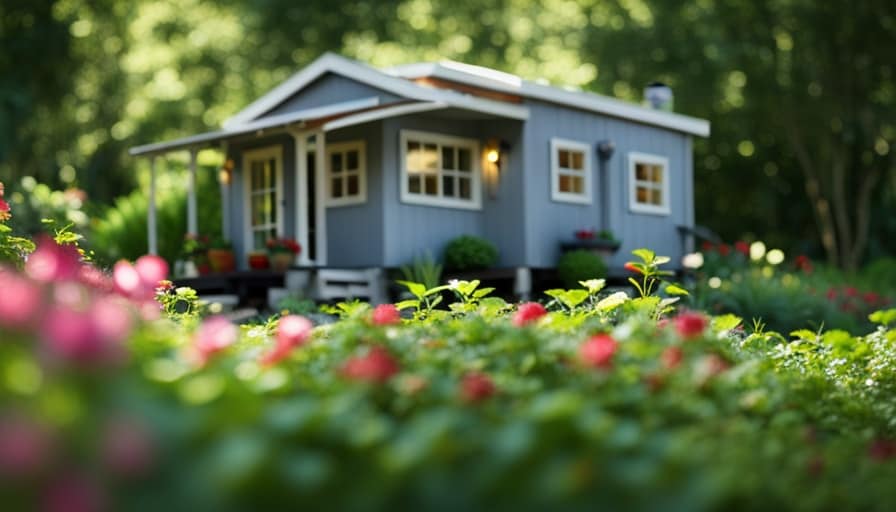
One key aspect to consider is the impact of tiny houses on property values. While some argue that they can decrease property values, others believe that they can actually increase them by adding diversity and uniqueness to the community.
Additionally, one of the challenges I may face is finding legal parking for my tiny house in urban areas. Many cities have restrictions on where tiny houses can be parked, making it essential to find suitable parking options that comply with local regulations.
With these factors in mind, I can now move on to finding suitable land for my tiny house.
Finding Suitable Land for Your Tiny House
After researching the zoning regulations and permitting process, it’s now time to start finding suitable land for my tiny house in Colorado Springs.
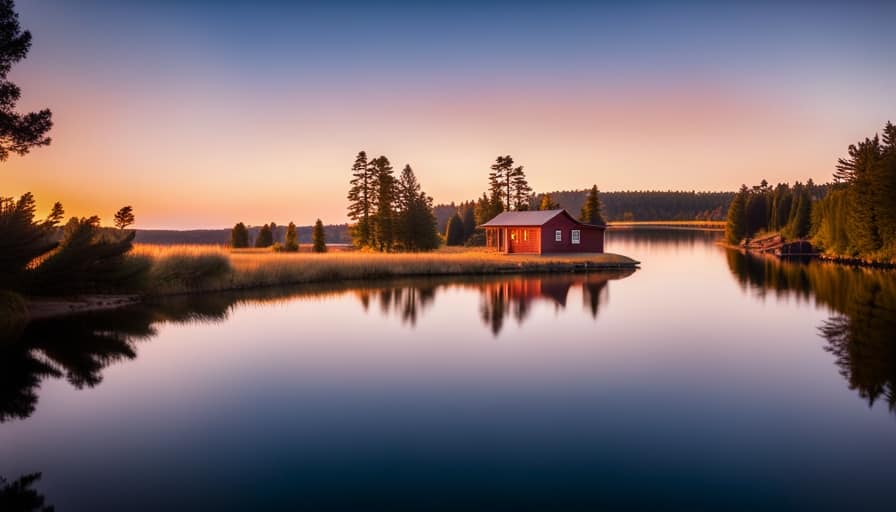
When it comes to finding land for a tiny house, there are a few important factors to consider. One of the major challenges is land availability constraints. Due to the increasing popularity of tiny houses, finding land that allows for their construction can be difficult. It’s important to do thorough research and explore different options, such as contacting local real estate agents or checking online platforms that specialize in tiny house-friendly land.
Additionally, environmental impact considerations are crucial. It’s important to choose a location that minimizes the impact on the surrounding environment and aligns with sustainable practices.
Taking these factors into account will ensure that I find a suitable piece of land for my tiny house in Colorado Springs.
Navigating Building Codes and Inspections
When it comes to navigating building codes and inspections for my tiny house in Colorado Springs, I’ll need to familiarize myself with the local regulations and ensure compliance throughout the construction process. Understanding local regulations is crucial to avoid any legal issues and ensure that my tiny house meets all the necessary requirements.
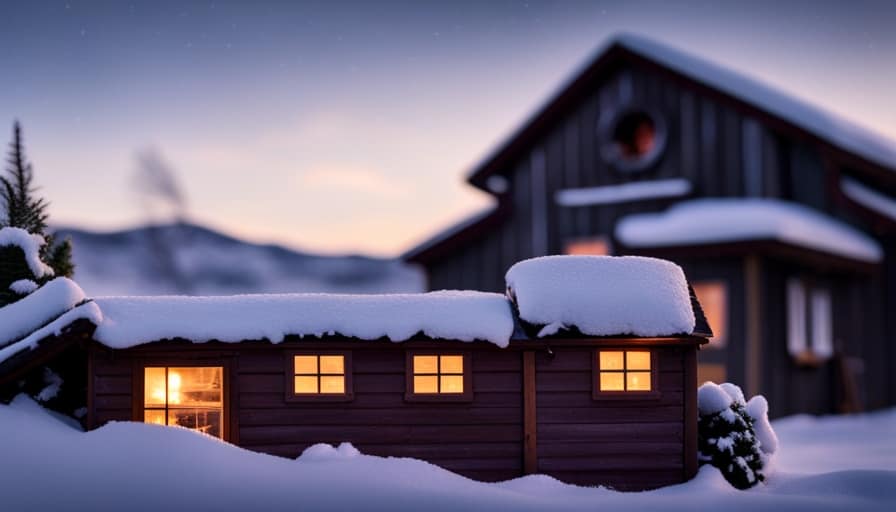
This includes obtaining proper permits, adhering to zoning laws, and following safety guidelines. To ensure a smooth process, I may consider hiring a professional builder who’s well-versed in local building codes and has experience with tiny house construction. Their expertise and knowledge will help me navigate the intricacies of the regulations and ensure that my tiny house is built according to the highest standards.
By understanding the local regulations and working with a professional builder, I can confidently proceed with my project while complying with all necessary codes and inspections.
With the building codes and inspections in mind, the next step is to secure financing and budget for my tiny house project.
Securing Financing and Budgeting for Your Project
To successfully secure financing and budget for my tiny house project in Colorado Springs, I frequently need to research various lenders and explore different funding options. Securing loans for a tiny house can be challenging, as it’s a unique type of project and not all lenders may be familiar with it. However, there are lenders who specialize in providing loans specifically for tiny houses.
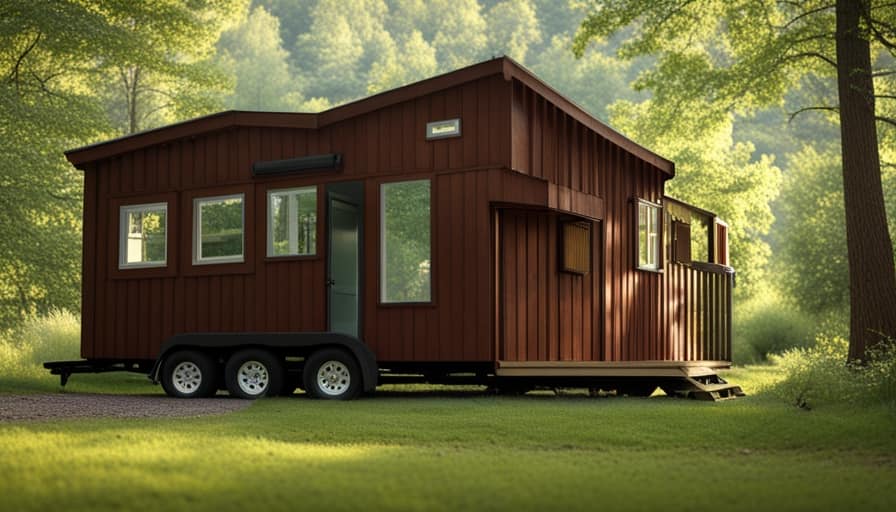
It’s important to gather all the necessary documents and information required by the lenders, such as the cost estimation of the project, including materials, labor, and any additional expenses. By presenting a thorough and well-prepared budget, it increases the chances of securing financing for the project.
Once the financing is secured, it becomes easier to move forward with the next steps of the project, such as dealing with utilities and exploring off-grid options.
Dealing With Utilities and Off-Grid Options
I can explore both traditional utility options and off-grid alternatives when dealing with electricity, water, and sewage in my tiny house in Colorado Springs.
When it comes to off-grid power, there are several options available. Solar panels are a popular choice, harnessing the energy of the sun to generate electricity. Wind turbines can also be used to generate power, particularly in areas with consistent wind patterns. Additionally, hydroelectric power can be harnessed if there’s a suitable water source nearby.
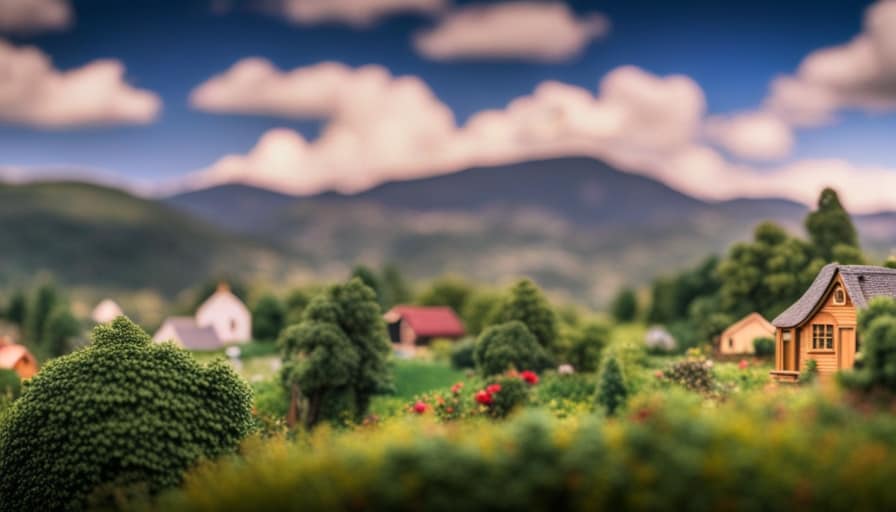
As for water sources, rainwater collection systems can be installed to capture and store rainwater for household use. Digging a well is another option, although it may require permits and additional expenses.
Lastly, composting toilets can be used to manage sewage in an off-grid tiny house, eliminating the need for traditional plumbing systems.
Frequently Asked Questions
What Are the Advantages of Building a Tiny House in Colorado Springs Compared to Other Cities in Colorado?
Building a tiny house in Colorado Springs has many advantages compared to other cities in Colorado. The city has a thriving tiny house community, supportive regulations, and an abundance of natural beauty to enjoy.
Are There Any Specific Design Requirements for Tiny Houses in Colorado Springs?
There are specific design requirements for tiny houses in Colorado Springs, including building regulations that must be followed. It is important to be knowledgeable about these requirements to ensure a successful and compliant build.

How Long Does the Zoning and Permitting Process Usually Take in Colorado Springs?
The zoning and permitting process in Colorado Springs can be a challenge. It takes time to navigate through the requirements and obtain the necessary approvals. However, with proper guidance and patience, it is possible to build a tiny house in Colorado Springs.
Are There Any Restrictions on Living in a Tiny House on Wheels in Colorado Springs?
Living in a tiny house on wheels in Colorado Springs comes with restrictions. Tiny house parking options are limited, and building codes for tiny houses must be followed. It can be challenging, but not impossible.
Can I Rent Out My Tiny House as an Airbnb in Colorado Springs?
Renting out a tiny house as an Airbnb in Colorado Springs is possible, but there are regulations to follow. It’s important to familiarize yourself with local zoning laws and obtain any necessary permits before listing your tiny house as a rental property.
Conclusion
Building a tiny house in Colorado Springs may be challenging due to zoning regulations, finding suitable land, navigating building codes, securing financing, and dealing with utilities.
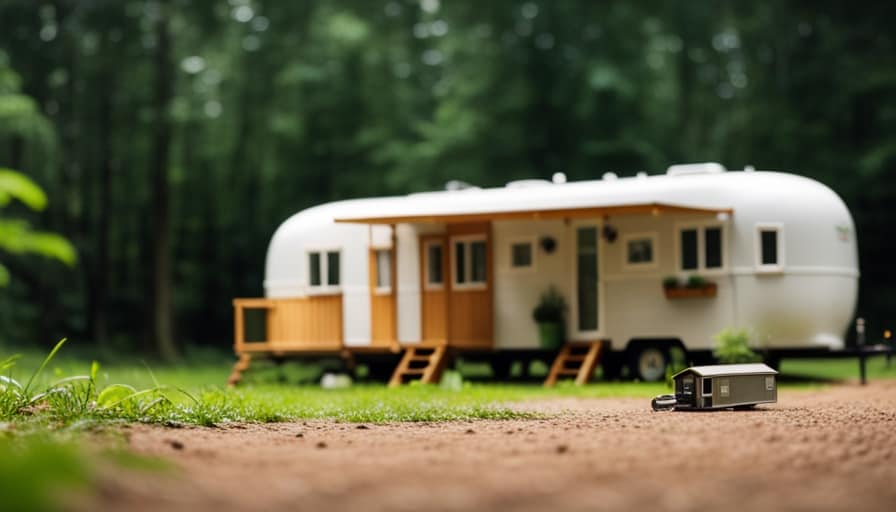
However, with determination and thorough research, it’s possible to overcome these obstacles.
For example, Sarah, a Colorado Springs resident, successfully built her own off-grid tiny house by carefully selecting land outside city limits, obtaining the necessary permits, and utilizing solar power.
Her experience demonstrates that with proper planning and knowledge, building a tiny house in Colorado Springs can be a rewarding and sustainable endeavor.
I’m Theodore, and I love tiny houses. In fact, I’m the author of Tiny House 43, a book about tiny houses that are also tree houses. I think they’re magical places where imaginations can run wild and adventures are just waiting to happen.
While tree houses are often associated with childhood, they can be the perfect adult retreat. They offer a cozy space to relax and unwind, surrounded by nature. And since they’re typically built on stilts or raised platforms, they offer stunning views that traditional homes simply can’t match.
If you’re looking for a unique and romantic getaway, a tree house tiny house might just be the perfect option.
-

 Beginners Guides2 weeks ago
Beginners Guides2 weeks agoHow To Buy A Tesla Tiny House
-

 Energy Efficiency2 months ago
Energy Efficiency2 months agoBest Tiny Homes For Cold Climates
-

 Beginners Guides1 week ago
Beginners Guides1 week agoTiny House Nation Where Are They Now Stephanie
-

 Tiny House Resources (e.g., legalities, cost, insurance, FAQs)2 months ago
Tiny House Resources (e.g., legalities, cost, insurance, FAQs)2 months agoDo Tiny Homes Need Planning Permission?
-

 Beginners Guides3 weeks ago
Beginners Guides3 weeks agoFrom The Show Tiny House Nation How Many Keep Their Tiny House?
-

 Beginners Guides2 months ago
Beginners Guides2 months agoUsing a Climbing Net For Treehouse Construction
-

 Beginners Guides2 months ago
Beginners Guides2 months agoHow to Build a Treehouse Without Drilling Into the Tree
-

 Beginners Guides3 weeks ago
Beginners Guides3 weeks agoTiny House Nation Who Pays For The Houses




